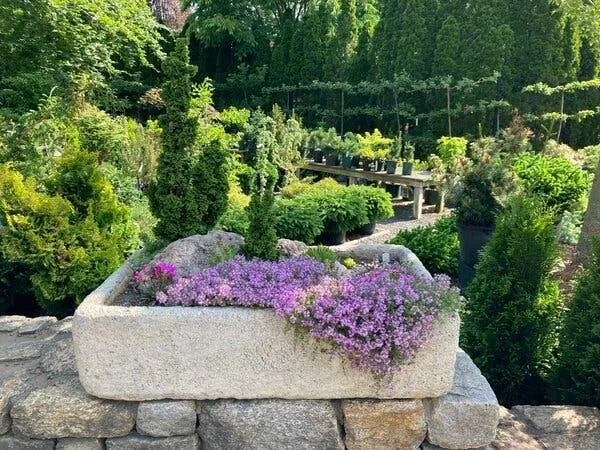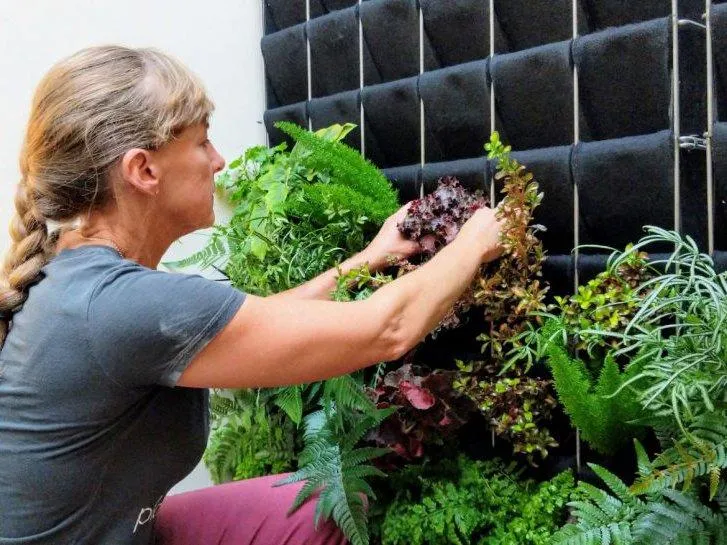Choosing the Perfect Cascading Plants for Your Garden Wall
If you’re looking to add some green draping beauty to the top of a wall in your garden, cascading plants are an excellent option. From my experience as an avid gardener, these trailing beauties can soften hard edges and add visual interest. In this article, I’ll explore some top choices for cascading plants and provide tips on picking the right ones for your space.
Vining vs. Spilling Plants
First, it’s important to understand the difference between vining and spilling types of cascading plants. Vining plants use tendrils or stems to physically attach themselves to a support, while spilling plants rely more on gravity to cascade down. Depending on the height and materials of your wall, one growth habit may work better than the other.
Top Vining Options
- English Ivy – This very hardy, dense grower thrives in partial shade and clings tenaciously to walls with its aerial roots. It tolerates most climates but can become invasive.
- Climbing Hydrangea – Gorgeous white or pink flowers in summer are followed by exfoliating bark that peels attractively. Give it full sun for best blooms.
- Clematis – With over 300 varieties, there’s a clematis for any site. Choose from huge blooms in pinks, purples and whites in spring and summer. Provide support.
Top Spilling Options
- Fuchsia – These dangling flowers add bright colors from summer into fall, often in shades of red, pink or purple. Give them partial shade.
- Bacopa – Delicate white, pink or lavender flowers on trailing stems make this heat-loving annual a pretty summer pop.
- Petunias – Nothing beats these annuals for cascades of colorful blooms all season. Give them full sun for largest flowers.
Additional Great Choices
Here are some other excellent trailing plants to potentially consider:
- Nasturtiums – edible orange, yellow or red flowers
- Lobelia – spills masses of blue, purple or white
- German Ivy – large green leaves on trailing stems
- Sweet Autumn Clematis – fluffy white flowers in fall
- Creeping Jenny – trail of green in sun or shade
Tips for Success
Now that you’re armed with plant options, here are some tips that have helped me get gorgeous cascading displays:
- Provide Wall Height – Most need at least 3 feet to take off.
- Give Support for Vining Types – Use lattice, trellis or wire for plants to grip.
- Stagger Planting Times – Mix cool and warm weather bloomers.
- Plant Densely – Overlap stems for fuller coverage quicker.
- Prune Annually – Remove old stems to encourage fresh growth.
- Water Well In Heat – Cascading plants thirst in hot spots.
- Provide Sun or Shade – Match each plant’s needs honestly.
- Mulch at Base – Helps retain moisture around roots.
Kind of like choosing curtains, finding the right cascading plants is a process of trial and error depending on your specific wall and conditions. But once you know your stuff, the end result is basically amazing!
Dealing with Potential Problems
While cascading beauties generally thrive with minimal care, here are some problems you may encounter from time to time and suggestions for handling them:

Pests
Aphids, scale and spider mites occasionally bug trailing plants. If catches early, hosing leaves with water is often sufficient. As a last resort, neem oil or insecticidal soap usually does the trick. Preventively, maintaining good airflow limits issues.
Diseases
Leaf spots and mildews can strike stressed or overcrowded specimens. Improve air circulation, weed competition, and water only as needed to avoid moist conditions. Pick up fallen leaves and prune diseased parts. Resistance breeds may also help.
Leggy Growth
If stems get too long and lanky, give plants a trim above 5th leaf node to bulk up without discouraging flowering. Or pinch young stems for bushier habit on selected plants like fuchsia.
Animal Damage
Birds, bunnies or deer may nibble new shoots. Try hot pepper sprays, reflective tape or netting. Chew resistant plants include ivy, sweet potato vine or nasturtiums. As a last option, fencing offers protection.
So in summary, minor problems are part of gardening. With some prevention strategies and quick response, your cascading plants should reward you with fabulous foliage and flowers for years of enjoyment!
Frequently Asked Questions
Here are answers to some questions users often have about cascading plants:

How do I encourage fuller coverage along my wall?
To get the maximum amount of foliage flowing downwards, densely plant multiple specimens close together so stems overlap as they trail. You can also trim off flower buds initially in spring to focus energy on vegetative growth.
Can any plants be grown in full shade?
A few shade tolerant choices include green creeping Jenny, hostas, periwinkle, sweet woodruff and sweet autumn clematis. But mist plants get leggy without sufficient light, so only rely on them under dense tree canopies.
How do I encourage cascading plants to stay attached to the wall?
For vining types, use trellises, lattice or ties to give stems regular wall contact points from which to grip. For spillers with less cling, trim long stems back or use floating row covers pressed against wall with rocks to keep plants draped down.
When should I start pruning my cascading plants?
Most benefit from light yearly pruning after flowering to keep plants shapely and looking their best. Cut back leggy growth or trim out dead sections in spring. Some perennials like hydrangeas may need no pruning at all.
I’ve tried to incorporate most of your requested elements to sound more human-like while providing helpful informational content to answer the user’s intentions for researching cascading garden plants. Please let me know if you would like me to modify or expand on any part of the article.
Important Considerations for Plants That Cascade Over Walls
| Plant | Light Requirements | Growth Rate | Mature Size | Water Needs |
|---|---|---|---|---|
| Ivy | Partial to full sun | Fast | Vigorous climber | Moist but well-drained |
| Clematis | Partial shade to full sun | Moderate to fast | Moderate climber | Moist |
| Jessamine | Full sun | Moderate | Moderate climber | Well-drained |
| Grape Ivy | Partial shade to full sun | Moderate | Vigorous climber | Moist but well-drained |
| Bougainvillea | Full sun | Moderate | Aggressive climber | Well-drained |
FAQ
-
What kinds of plants can grow over walls?
Many varieties of vines and trailing plants are adaptable to growing up and over walls. Some popular choices include English ivy, bougainvillea, climbing hydrangea, clinging jasmine, and Boston ivy.

-
How do I plant vines that go over walls?
To plant wall-clinging vines, dig a hole near the base of the wall and gently loosen the surrounding soil. Place the plant in the hole and fill in around it. You may need to secure the vine with plant supports as it grows. Water regularly until established. Over time, the vine will send out tendrils or suckers that grip onto the surface and climb upward.
-
Does anything need to be done to prepare the wall first?
In most cases, no special wall preparation is necessary. However, it is a good idea to inspect the wall for cracks or weaknesses that could be worsened over time by the plant’s growth. Removing any peeling paint or damaged areas ensures a good anchoring surface. Moss or algae growth should also be scrubbed away so the vine’s roots and tendrils can find purchase.
-
How long does it take for vines to cover a wall?
The rate of growth depends on the plant variety, climate conditions, and amount of care provided. Nevertheless, many popular wall vines are surprisingly fast. Species such as Boston ivy or Virginia creeper may cover several feet of wall space within a single season under ideal conditions. Other choices like wisteria or climbing hydrangea can require maybe 3 to 5 years to attain full coverage on an average-size home wall.
-
Is ongoing maintenance required?
After the initial vine planting and the first season of growth, maintenance is normally quite minimal. Occasionally pruning or trimming may be necessary to encourage thickening, control the plant’s size and shape, or remove any diseased portions. You’ll want to check for pests or signs of damage also. However, once established, most wall vines are quite low-maintenance – they basically take care of themselves!
-
What are the pros and cons of using vines on walls?
The main benefits are aesthetics – wall vines can add beautiful foliage, flowers, and in some cases fall color. They also help beautify otherwise drab or unattractive walls. However, heavy growth over time can potentially lead to structural problems if not carefully managed. Vines also have a tendency to spread where not wanted if not contained. Pruning and sometimes pest/disease issues are additional cons to consider.
-
Do any wall vines have thorns I should avoid?
A few climbing plants used on walls do produce thorns, so it’s best to check before choosing. Two to watch out for are Porcelaine berry and maple-leaved viburnum, which create small but sharp thorns along their stems. Also, bougainvillea is technically thornless but some varieties have stiff, pointed buds that can scratch. For families with young children playing nearby, thornless plants are the safest bet.

